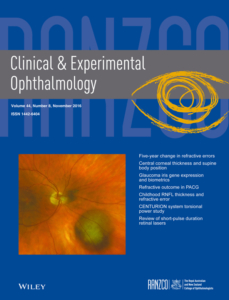Five-year change in refraction and its ocular components in the 40- to 64-year-old population of the Shahroud eye cohort study
Authors
Affiliations
1Noor Research Center for Ophthalmic Epidemiology, Noor Eye Hospital, Tehran, Iran.
2Noor Ophthalmology Research Center, Noor Eye Hospital, Tehran, Iran.
3Department of Ophthalmology, Centro Médico San Luis, Buenos Aires, Argentina.
4Department of Epidemiology, School of Public Health, Shahroud University of Medical Sciences, Shahroud, Iran.
5Department of Epidemiology and Biostatistics, School of Public Health, Tehran University of Medical Sciences, Tehran, Iran.
Abstract
Background: To assess 5-year refractive changes and their related factors in the 40- to 64-year-old population of Shahroud, Iran.
Design: Prospective cohort study.
Participants: Of the 5190 participants of Phase I, 4737 participated in Phase II (response rate = 91.3%).
Methods: Participants were tested by refraction, visual acuity, slit-lamp biomicroscopy, ophthalmoscopy and biometry. Myopia was defined as a spherical equivalent more negative than -0.5 dioptre (D) and hyperopia as a spherical equivalent more positive than +0.5 D.
Main outcome measures: Mean 5-year change in spherical equivalent refraction.
Results: The mean 5-year change in spherical equivalent refraction was +0.24 D (95% CI: +0.22 to +0.25). After 5 years, 4.77% (95% CI: 4.08 to 5.46) of subjects developed at least 0.5 D of myopia and 22.27% (95% CI: 20.97 to 23.57) developed at least 0.5 D of hyperopia. Five-year changes in refraction included a hyperopic shift in all age groups. The greatest hyperopic shift was seen in middle-aged women. The greatest loss of lens power was observed in hyperopic women and the least in myopic men. Nuclear cataract was associated with a myopic shift in refraction. The axial length and the corneal power had very small changes during this period. Myopes showed the greatest increase in axial length. Corneal power increased by a very small amount in all refractive groups.
Conclusions: The most important biometric index related to hyperopic shifts, which were greater in magnitude in women, was loss of lens power, whereas nuclear cataract was associated with myopic shifts.
Keywords: adult; cohort study; ocular biometry; refractive errors.

